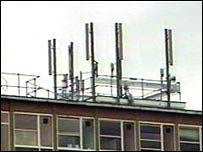 |
 |
|
 |
 |
About Us | Contact |
|
|
02/03/2018 - Legal precedent challenges legal status quo on mast planning permissionsLegal precedent challenges legal status quo on mast planning permissionsA landmark high court judgment has been made this month finding that pole mounts for mobile antennae are to be classified as masts and as such require specific planning permission. According to the 2015 General Permitted Development Order (GPDO) (amended in November 2016), a mast mounted antenna on a building less than 15 metres in height, or mounted below this height on a larger building, must have planning permission if it is also facing a public highway within 20 metres (effectively any path or road where a member of the public has right of way without additional explicit permissions).  Typical roof mounted stub masts There has been considerable obscurity over the precise definition of a "mast", with the industry advocating a position that large ground mounted installations and very specific "stub" masts are the only structures that are affected. This has been largely pushed by a "code of best practice" that they have produced and circulated to councils, leading to a number of base stations being installed without having to go through the planning permission process. A legal challenge has been successfully mounted in the high court by Nigel Lawbey (represented by barrister Andrew Parkinson of Landmark chambers) against Lewisham Council that the pole mounted installation on a block of flats should be considered to be a mast and therefore should have required planning permission, and was seeking a judicial review. The judge's verdict was based on a recognition that the purpose of the GPDO was to balance the need for a roll out of telecommunications infrastructure with the need to protect neighbourhoods from "unnacceptable adverse visual impact". She pointed out that as the GPDO explicitly covered building mounted installations it was obviously intended to cover more than simply large ground mounted installations, and decided that as the size and visual disturbance caused by pole mounted installations was similar to stub-mast installations (which the industry have accepted as falling under the defintion of a mast), it is illogical to treat pole-mounted installations differently and inconsistent with the intended purpose of the GPDO. She concluded therefore that the defendent incorrectly interpreted the GPDO in finding that the support poles were not to be defined as masts, and granted the judicial review. Although the judicial review has not yet taken place, this sets a legal precedence that any telecommunications antenna installed with a structure that could be considered to have adverse visual impact on surrounding residences may now require explicit planning permission. This is something we have campaigned about strongly in the past, particularly with respect to exposure levels in surrounding houses. Many of these installations would now require planning permission prior to installation. In particular, development is not now permitted under the GPDO on a building in the case of the installation, alteration or replacement (emphasis ours) of any mast on a building which is less than 15 metres in height when the mast would be within 20 metres of the highway (unless the siting remains the same and the dimensions of the altered or replaced mast are no greater). We also notice that since 2015 all wall mounted installations less than 15 metres from ground level and facing a public highway will also now require planning permission. These restrictions will have a significant impact on the rollout of 5G in urban areas. External links» |

